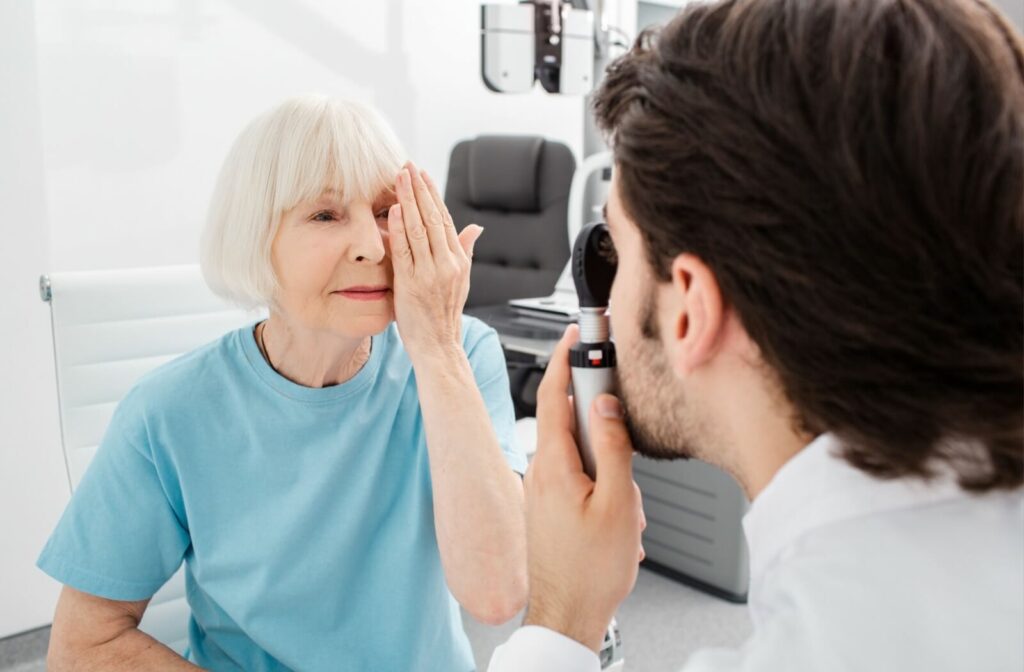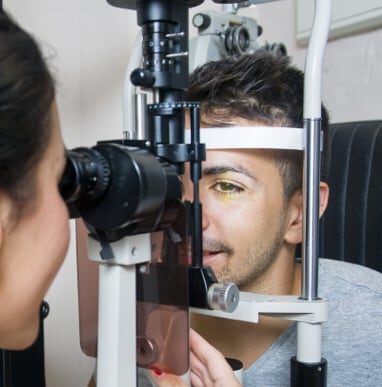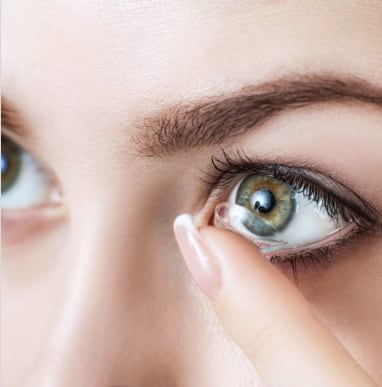Your eyes are extremely complex. They’re made up of dozens of little systems, each contributing to your overall vision. This is why regular eye exams are so important—they allow your optometrist to check for all kinds of underlying conditions that could otherwise progress unnoticed.
One common condition that optometrist look for is called “age-related macular degeneration,” or AMD. AMD causes deterioration of your central vision and distorts straight lines. If you notice unusual vision symptoms, visit your optometrist—AMD can permanently damage your vision if left unaddressed.
What Is Age-Related Macular Degeneration?
The retina is one of the most important parts of your visual system. Located in the back of your eye, it captures light and sends visual signals to the brain. This creates the images you see.
When the macula—a small but important part of the retina—begins to deteriorate, this is called age-related macular degeneration (AMD). AMD primarily affects your central vision, making daily activities like reading and driving significantly harder.
However, there’s a catch with AMD. It doesn’t just have one form—it has two.
Dry AMD
Dry AMD is the most common type of macular degeneration, and it’s a leading cause of vision loss in people over the age of 50. This is a slow, progressive condition that causes the macula to deteriorate.
Dry AMD happens when the macula thins over time and tiny deposits, called drusen, develop under the retina. Dry AMD can be tricky, as it isn’t always accompanied by symptoms.
Nonetheless, as dry AMD progresses, it causes the loss of your central vision.
How to Recognize Dry AMD
It’s easy to mistake the signs of dry AMD for something else. That’s why it’s important to note any changes in your vision, especially if these changes specifically affect one area in your field of view.
Dry AMD usually causes:
- Blurred or hazy central vision.
- Trouble reading small print or recognizing faces.
- Difficulty seeing in dim lighting.
- Straight lines appearing slightly bent or distorted.
Any of these symptoms should be taken seriously. The earlier you know what’s causing your symptoms, the easier it is to address them.
Wet AMD
Wet AMD is much less common. However, it’s also much more severe and should be treated as a medical emergency.
Wet AMD develops when abnormal blood vessels grow beneath the retina and start to leak. The fluids released by this leakage can damage the macula. This can develop after a dry AMD diagnosis or on its own.
Wet AMD develops much faster than dry AMD and causes vision problems in a short amount of time. If you ever notice significant changes to your vision, don’t ignore them. Contact an optometrist or other medical professional immediately for an eye exam. Early intervention could be key to preserving your sight.
How to Recognize Wet AMD
Wet AMD causes more sudden changes. Watch for noticeable and abrupt changes in your vision—especially if you’ve been diagnosed with dry AMD.
The key symptoms of wet AMD include:
- A rapid decline in the clarity of central vision.
- Dark or blank spots (scotomas) in your field of vision.
- Straight lines looking distorted, bent, or wavy.
- Colors or details becoming harder to distinguish.
If these sound familiar, immediately seek medical attention. Wet AMD can permanently damage your vision, so early diagnosis is essential.
Is AMD Permanent?
AMD is a chronic condition. Its effects are long-lasting, and once the retina is damaged, this damage can’t be reversed. Any vision loss is permanent, which is why early intervention is so important.
However, AMD can be effectively managed. It all starts with a visit to your optometrist, who can find a treatment designed to meet your needs.

AMD can be treated with:
- Anti-VEGF injections to slow vision loss and reduce abnormal blood vessel growth.
- Special therapy to target abnormal blood vessels in the retina.
- Nutritional supplements like AREDS2 to support eye health and potentially slow progression.
- Lifestyle changes, such as quitting smoking and adopting a healthy diet, to protect overall vision.
While there isn’t a cure, AMD can be managed with your optometrist’s help. These measures are key to preserving your vision and quality of life.
Signs You Need to Visit Your Optometrist
Your vision is precious, so you should never ignore the signs that something is wrong. Any unusual developments with your vision should warrant a visit with your optometrist—even if the changes seem minor.
You may need to visit an optometrist if you notice signs like these:
- Sudden changes in vision clarity.
- Wavy, distorted, or blurred central vision.
- Finding it harder to read, drive, or identify faces.
- Needing brighter light to see clearly.
- Seeing black spots or other unusual distortions.
These signs indicate AMD or other eye conditions, and early treatment can make all the difference.
Get Checked for Age-Related Macular Degeneration
Your vision is an important part of everyday life, and staying on top of your eye health is essential for peace of mind. There’s no need to put your vision at risk—not when our team at Vision Care Center can help. Contact our team today and book your appointment, and together, we’ll stay on top of your eye health and vision!












